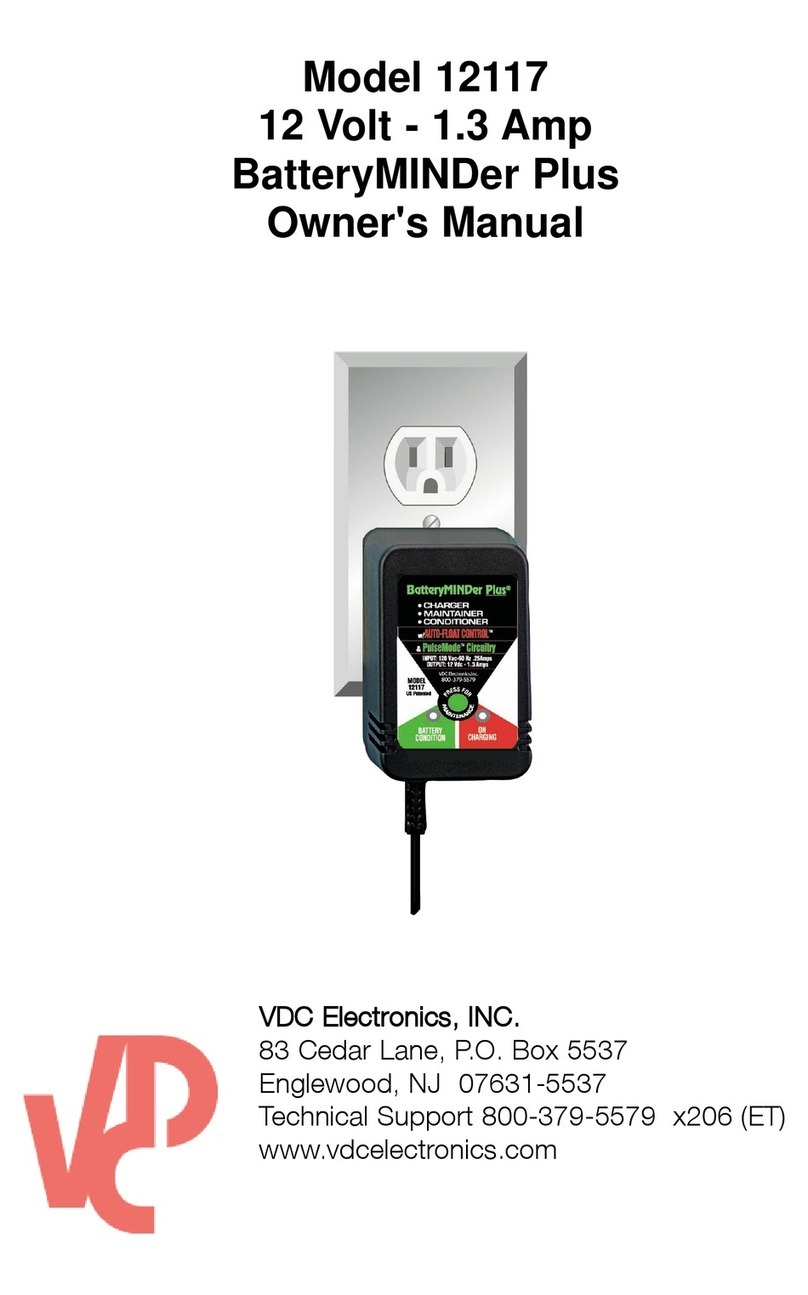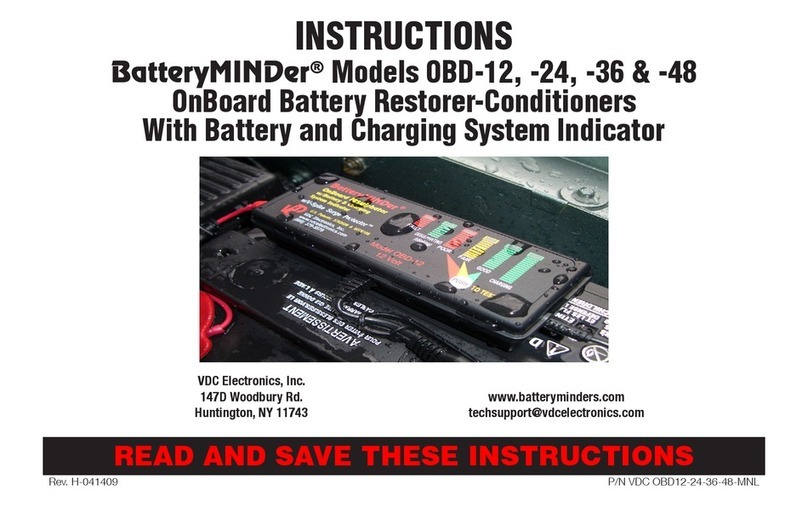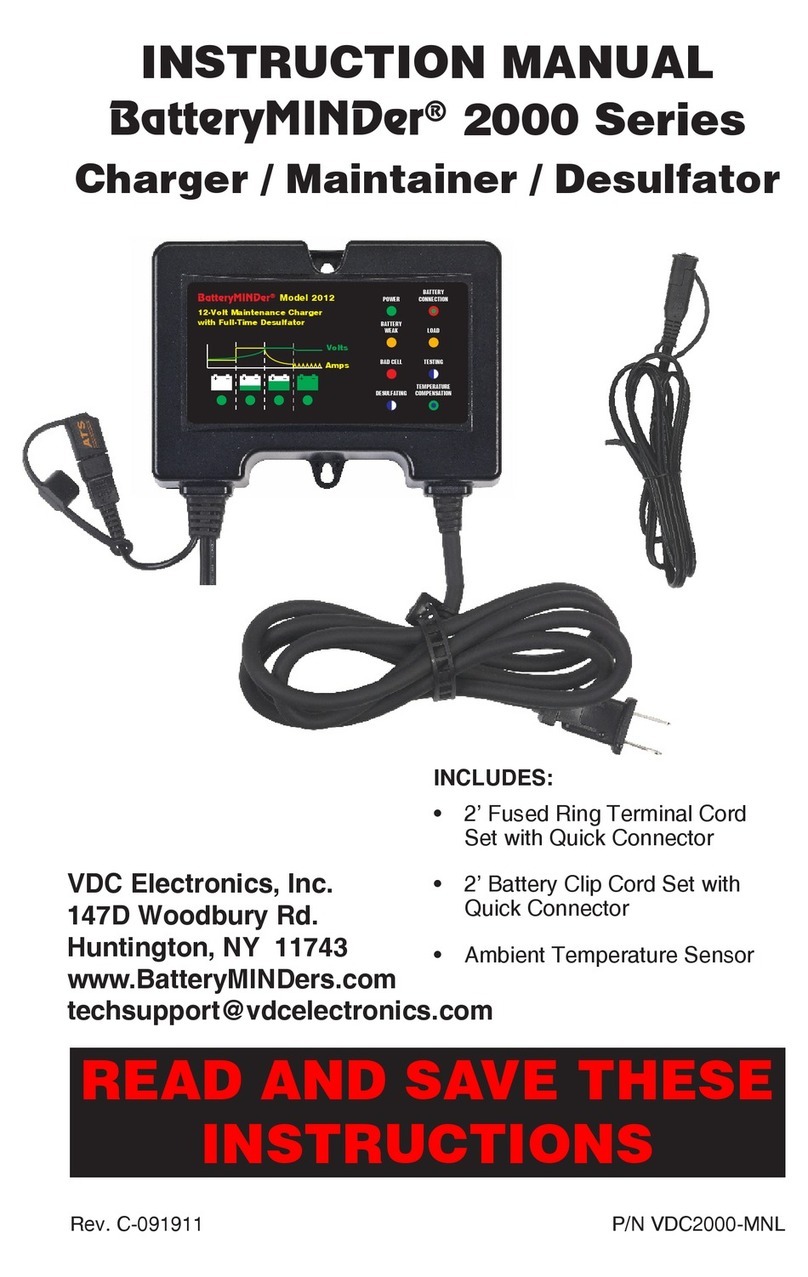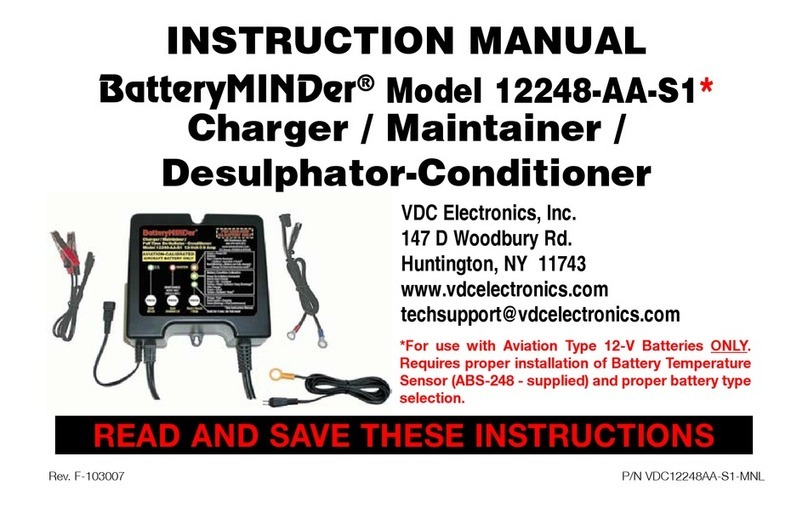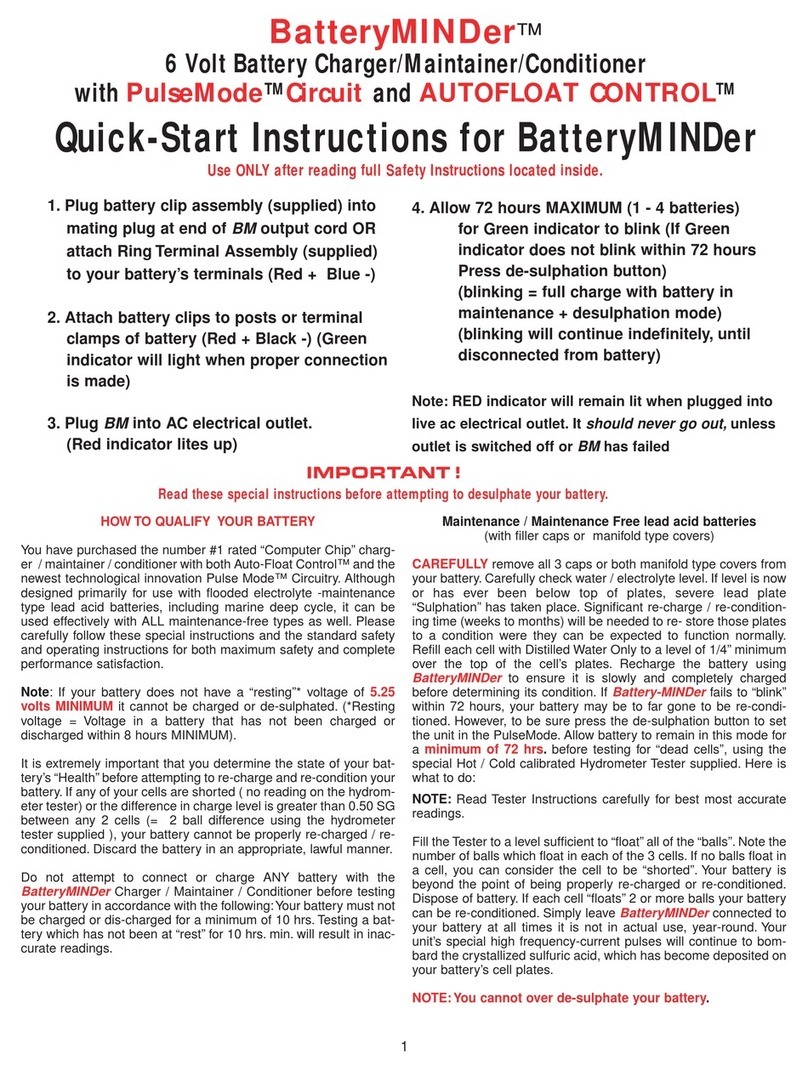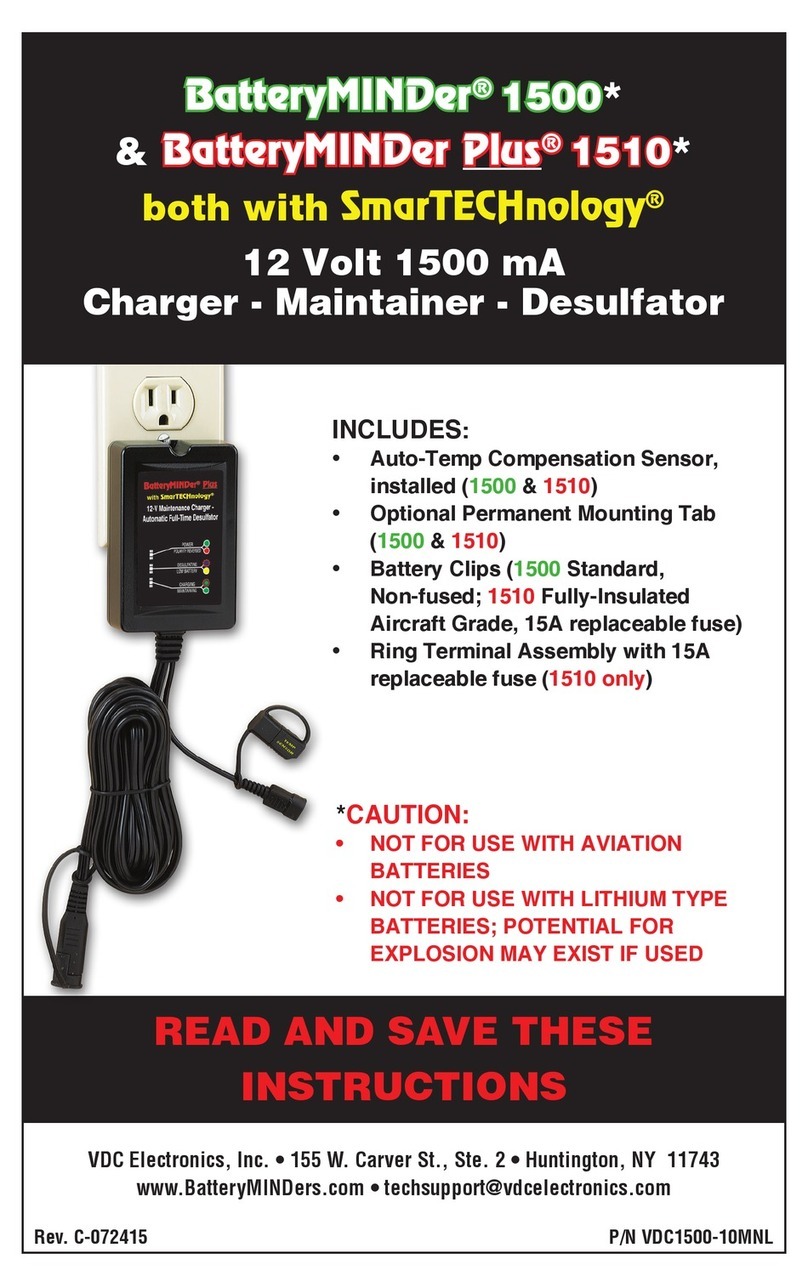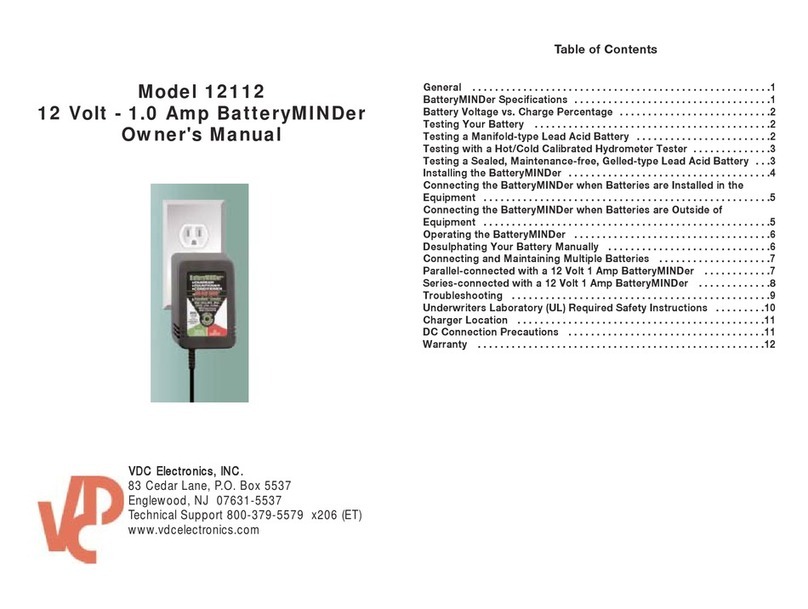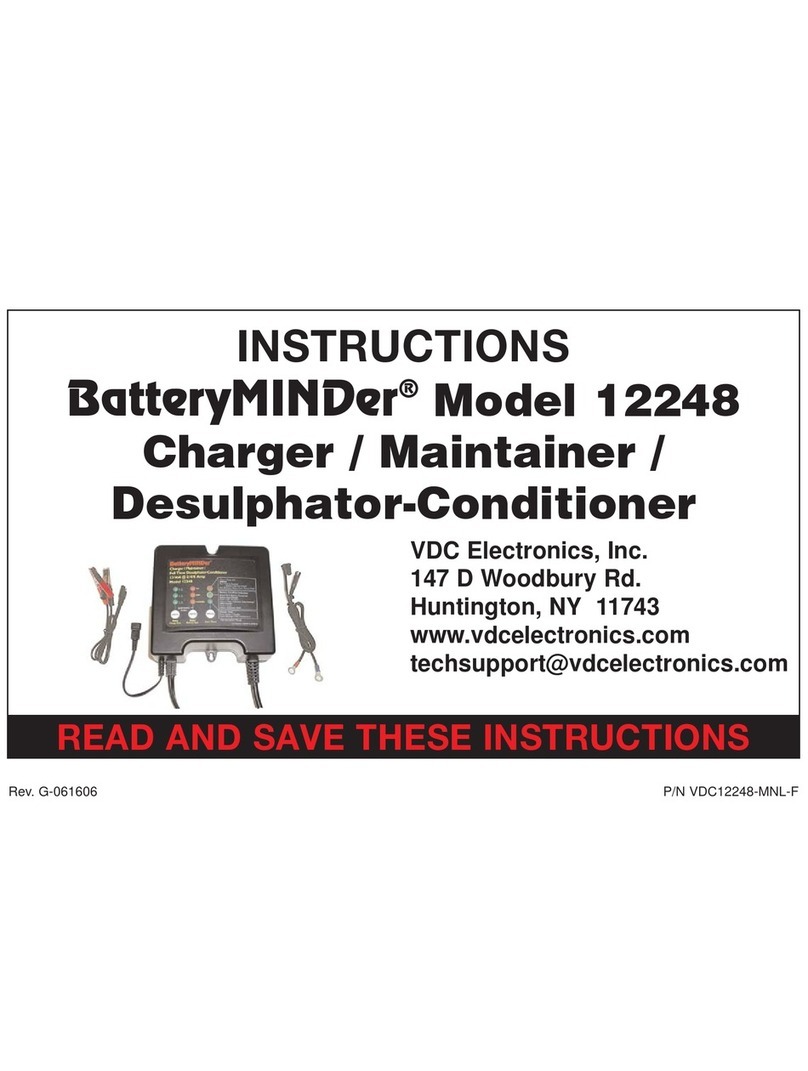BatteryMINDer® Model 12248
Rev. P-071510 Page 6 P/N VDC12248-MNL
DC CONNECTION PRECAUTIONS
a. Connect and disconnect DC output clips from battery only
after removing charger power cord from outlet.
b. Attach clips to battery posts and twist or rock back and forth
several times to make good contact. This tends to keep clips
from slipping off terminals and reduces risk of sparking.
FOLLOW THESE INSTRUCTIONS WHEN BATTERY IS
INSTALLED IN EQUIPMENT (VEHICLE, PWC, BOAT,
TRACTOR, ETC.) A SPARK NEAR BATTERY MAY CAUSE
BATTERY TO EXPLODE. TO REDUCE RISK OF A SPARK
NEAR BATTERY:
c. Position DC output cord to reduce risk of damage by hood,
door, covers, or moving engine parts.
d. Stay clear of fan blades, belts, pulleys, and other parts that
can cause injuries.
e. Check polarity of battery posts. POSITIVE (POS, P, +)
usually has a larger diameter than NEGATIVE -.
f. Determine which post of battery is grounded (connected) to
the chassis of equipment. If negative post is grounded see Item
N. If positive post is grounded see item P.
N. For negative grounded equipment, connect POSITIVE (RED)
clip from charger to POSITIVE (POS, P, +) ungrounded post of
battery. Connect NEGATIVE (BLACK) clip to vehicle chassis
or engine block away from battery. Do not connect clip to
carburetor, fuel lines, or metal body parts.
g. For positive ground equipment, connect NEGATIVE
(BLACK) clip from charger to NEGATIVE (NEG, N,)
UNGROUNDED POST OF BATTERY. Connect POSITIVE (RED)
CLIP to chassis or engine block away from battery.
DO NOT CONNECT CLIP TO CARBURETOR, FUEL LINES,
OR SHEET METAL BODY PARTS.
Connect to heavy gauge metal part of frame or engine.
h. When disconnecting charger, disconnect charger from AC
outlet, then remove clips from vehicle chassis, and battery posts.
Operating instructions for charge information.
